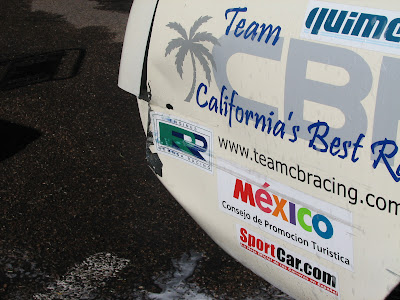
Any La Carrista should read this...
Anyone who has taken part in La Carrera Panamericana has a basic understanding of how the great race came to be but I recently found an article which was printed in an old printing of Harper's Magazine. After reading this article I have come away with a refreshing new respect and outlook for the history of the race. It's was also interesting to note the original race started on Cinco de Mayo and I couldn't help but wonder... even as special as this race is, can you just imagine doing it during Cinco de Mayo. Just imagine what it would be like, doing 150 miles per hour through downtown Mexico City on Cinco de Mayo not to mention the welcome and celebration at each village and city on such a holiday. All I can say is Holy S... well you get the idea. Also, I didn't realize that the United States had so much to do with getting the Pan-American Highway built.
While this article starts off just a tad slow, out of respect for the race, do your self a big favor and read it in it's entirety. Great stuff!
In 1826, after throwing off generations of Spanish rule throughout the South American continent, Simon Bolivar, El Gran Libertador, called a conference. Convinced that he had not heard the last from the Spanish viceroys, Bolivar wanted to hash out what sort of union the nations of the Americas might construe in order to withstand the colonizer's return. The conference, however, failed to come off as planned. One U.S. delegate died en route, and the other arrived as the round. tables were adjourning. Bolivar died in 1830, and for the next fifty-nine years, war foiled attempts to reschedule. Finally, in 1889, the United States hosted what is now considered to be the first Pan-American Conference. No longer preoccupied with the return of the Spanish conquistadors, the delegates dedicated themselves to such business as the standardization of weights and measures and the sanitation of ships. It was also suggested that an enormous rail system be constructed, linking the represented countries and facilitating the free exchange of goods and services with which all felt the future of the hemisphere lay.
The plan stalled until the fifth Pan-American Conference, at which the delegates agreed to a modification: instead of railroads, they would build a highway.
Thus was convened, on October 5, 1925, in Buenos Aires, the first Pan-American Highway Congress. Construction began shortly thereafter, and throughout the mid-century, tar-speckled road crews could be found paving their way across the American continents, followed closely by the ribbon cuttings of politicians eager to associate themselves with the forward march of progress.
The first Latin American country to complete its section of the great artery was Mexico. Despite having only recently recovered from the chaotic frenzy of a ten-year revolution that claimed more than a million lives, collapsed the banking and monetary system, decimated the universities, laid the axe to farms and stockyards, and produced a new order as confusing and tenuous as the old had been oppressive and reliable, Mexico immediately sent out the steamrollers and cement mixers. The project spanned seventeen years. Its completion, in 1950, gave the nation her first cross-country highway.
The president of Mexico at this time was Miguel Aleman, a lawyer, businessman, and real estate developer who once declared it his ambition that all Mexicans have "a Cadillac, a cigar, and a ticket to the bullfights." Having spent his youth in a country torn to flinderation by lofty ideals, he was now eager to set her marching steadily toward modernization down the newly completed highway. The boostering of tourism! The flourishing of trade! No simple ribbon cutting would suffice to advertise an accomplishment so profound. It required a road race.
The course would begin in Ciudad Juarez and head south to the Guatemalan border, over the deserts, up the mountains, into the jungles, and across the rivers, demonstrating for the international crowd what great strides the president had taken in modernizing the country's infrastructure. Entries were restricted to five-passenger hardtop stock cars, piloted by a driver and a navigator. The winner's purse was set at 150,000 pesos, and on Cinco de Mayo, 1950, beneath a blazing sun, 126 vehicles representing at least ten countries roared off the starting line at one-minute intervals onto a brand new ribbon of road closed to all other traffic and guarded by soldiers authorized to shoot on sight any stray farm animal caught wandering the shoulder.
Within the fanfare, a few discordant notes could be heard. An editorial published two months before the race in the newspaper El Monitor argued that a modern road connecting Mexico to the "Colossus of the North" would lay her open to a "methodical and total occupation" by U.S. forces. The completion of the highway had "introduced into the country a Trojan Horse of enormous proportions which harbors within the power of the United States of America.... In building the highway, Mexico has taken one more step toward her own destruction."
There turned out to be some truth to this dark forecast. The road brought with it the race, and during the five years of its initial run, the Carrera Panamericana was one of the most destructive road races ever. Every year someone died; most years it was a handful. Footage of the event shows cars crashing through small Mexican towns like pinballs. By 1954, "the death race" had claimed so many lives and damaged so much property that Aleman's successor, Adolfo Ruiz Cortines, could see no good reason why it should continue. Everyone knew by then that Mexico had a new highway. Much to the dismay of the world's speed-hogs, Cortines shut down the Carrera.
The roads stayed clear for thirty-four years.



























































